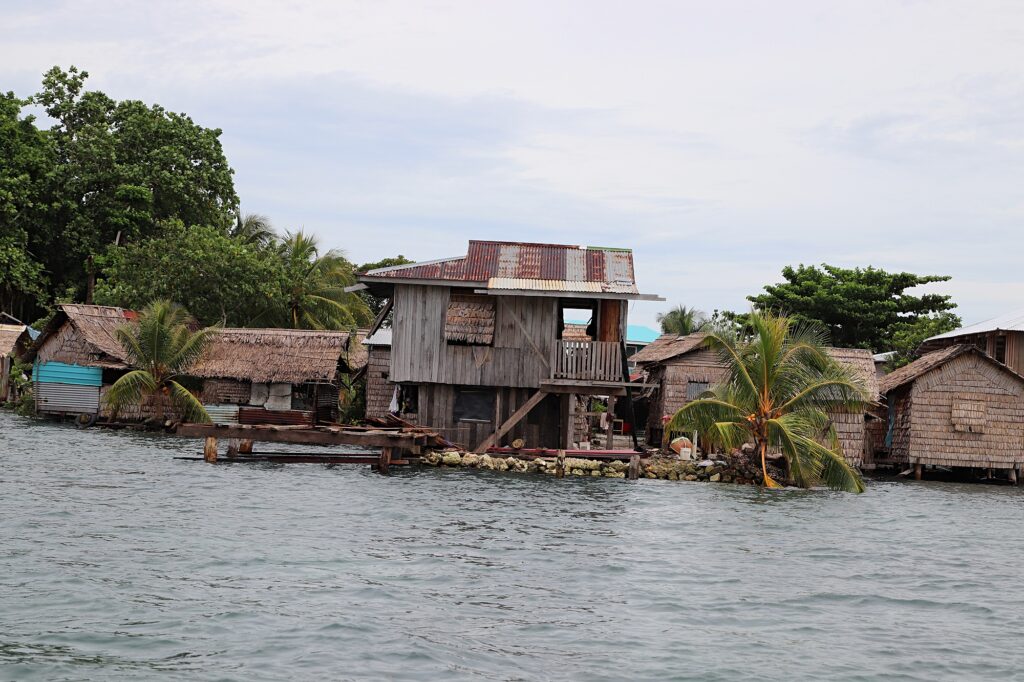BY LYNTON AARON FILIA
Increasing king tides in the Lau Lagoon have threatened the wellbeing and sustainable livelihoods of the people living on the artificial islands. Currently, the most vulnerable ones are children and young people.
In Lau lagoon to some who you might not hear of it, it was the largest lagoon in the whole of Malaita province with its wide reefs, biggest mangrove, and many man-made islands where you will be amazed how these islands can withstand any weather conditions and houses that are designs in a very unique way.
Currently, the artificial islands which house approximately 70 percent of young people, have changed rapidly due to the impact of climate change. People have been experiencing intensifying king tides, storms, and unpredictable seasons in a worrying stage.
During king tides, it flooded into the interior of the islands, destroying kitchens that are built on the ground and carrying waste from the toilets that surround the islands. Few people are now trying to relocate to the mainland but most wish to remain on their islands, while others flee to Honiara.

Besides, dwellers on artificial islands are also without clean water and proper sanitation. Every day, people travel long distances on dug-out-canoe to fetch water on main-land for cooking and drinking. This is an overdue issue overlooked for centuries.
The ongoing situations have been affecting their ways of living in harmony with nature and marine biodiversity.
It is predicted by 2030, many people especially children and young people will misplace their homes. They fear their homes built 500 years ago which contain their cultural heritage will be taken by the impact of climate change.
With the current issues people of Lau are facing, they are seeking responsible authorities to assess biodiversity, food security, water resources
and livelihoods mainly to identify a need to better understand the threats of climate change to people living on the artificial islands through an appropriate methodology.

Young people did not have fair knowledge and understanding about climate change. It is important to inform them about adaptation planning at the community level, practices, and participatory.
As part of the Solomon Islands Government’s actions on responding to the impact of climate change on low-lying atolls and artificial islands, technical studies and community consultation for the development of relocation guidelines were conducted last year.
The work is undertaken under the guidance of a multi-stakeholder Advisory Committee with representation from both Government and Non-Government stakeholders co-chaired by the Permanent Secretaries of the Ministry of Lands, Housing and Survey and the Ministry of Environment, Climate Change, Disaster Management and Meteorology.
Climate change is caused by a greenhouse gas emission blanketing the Earth which traps the sun’s heat. As a result, it leads to global warming and climate change. The world is now warming faster than at any point in recorded history.
At the recent COP26, United Nations is calling for countries to keep up to the goal of 1.5 degrees Celsius. It requires greater ambition on mitigation and immediate concrete action to reduce global emissions by 45 percent by 2030.
UN said G20 countries have a particular responsibility as they represent around 80 percent of emissions.
It urges developed countries and emerging economies to build coalitions to create the financial and technological conditions to accelerate the decarbonization of the economy as well as the phase-out of coal. These coalitions are meant to support the large emitters that face more difficulties in the transition from grey to green for them to be able to do it.
Lau Lagoon is a part of the Solomon Islands. It is located on the northeast coast of Malaita Island. The lagoon is more than 35 kilometers long and contains about 60 artificial islands built on the reef.
Lau Lagoon people call themselves wane I asi ‘salt-water people’ as separate from wane I tolo ‘bush people’.




